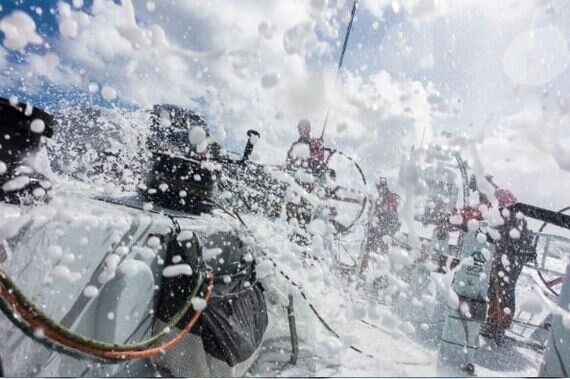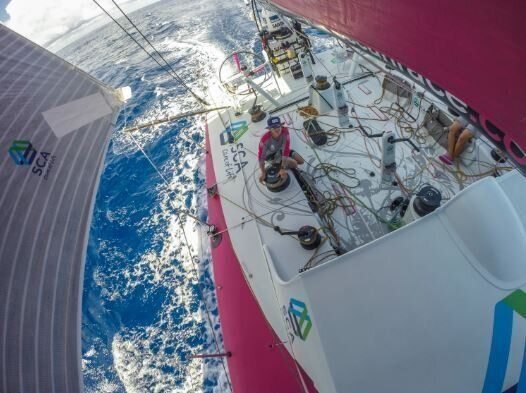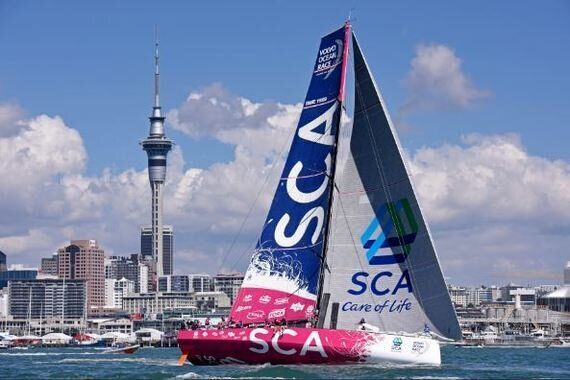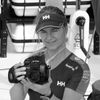
The Volvo Ocean Race is known for being an extreme sports event, and leg five will be the most extreme to date. Team SCA will defy Mother Nature by sailing through the infamous Southern Ocean with relentless ten-metre high waves, dodging icebergs and even encountering snow.
However, despite all of its extremities, the Volvo Ocean Race has to draw a line somewhere. This line happens to be a category five Tropical Cyclone named Pam, and she has definitely got our attention. She is the result of tropical pressure and she is incredibly powerful.
We had been prepared, and we knew about her whereabouts on our journey to Auckland; however these kinds of weather systems are very unpredictable and impossible to forecast in the long-term. This past week, Pam has been moving aggressively down south from the tropics towards New Zealand.

The center of the cyclone passed in-between the Solomon Islands and Fiji on open water. Vanuatu was not as fortunate. The storm, at the time a category five, smashed into the Pacific Island nation on Friday night, demolishing villages and killing people. Our thoughts go to the badly affected areas, the citizens and the victims and their families.
A typical sailing strategy in such extreme situations would be to more or less aim for the center of the storm and keep sailing towards the center as it slowly moves away from you. Sooner or later it will give you a good position and angle the boat for your next wave point with the quickest approach possible. The other option would be to sail a detour, but it's a long way round and we already knew how unpredictable Pam was.
With waves as high as 23 metres, sustained winds of 110 knots and gusts of up to 150 knots, it's an incredibly difficult decision for any skipper and navigator to make and is one that may determine the whole leg. How much can we push without damaging the boat and the crew? How many risks are we willing to take? Should we make a detour and sail "slow" but do so more safely?
Fortunately Volvo Ocean Race CEO, Knut Frostand, and his team of race officials took this decision out of our hands and agreed that postponing the start of leg five was the safest way forward. We know that five or six boats broke and were forced to release the throttle and limp over the finish line on this particular leg in the last edition of the race, and none of the teams wanted to do that.

Yes, the Volvo Ocean Race is "life at the extreme" however, there's a big difference between living on the edge and surviving on the edge. Had the boats stayed on schedule, Team SCA would have been in full survival mode - making sure the boat, as well as the team, made it out without damage.
Delaying the start did come with an unexpected silver lining, a chance to get back up to 100%. Our skipper Sam rightly said that on normal leg starts, the team go to sea quite exhausted, so a couple of extra days to recuperate was welcomed by the whole of Team SCA.
Until we had the final go-ahead from the race organisers, we had to be prepared to drop everything and go, and we were. The boat had been loaded, packed and we were anxiously waiting on the sidelines, giving us a few extra days to rest and clear our heads.

We finally set sail for leg five yesterday and we are ready for some fast downwind sailing into the Southern Ocean. We know it's going to be tough, but that's exactly what we've been preparing for.
Thank you for following us, and make sure you come and say hello on Twitter using the hashtag #teamsca!
